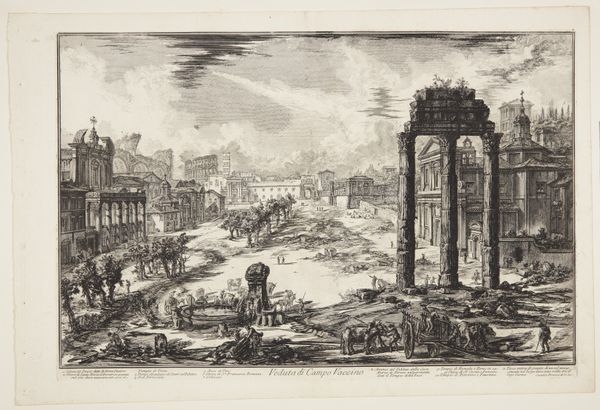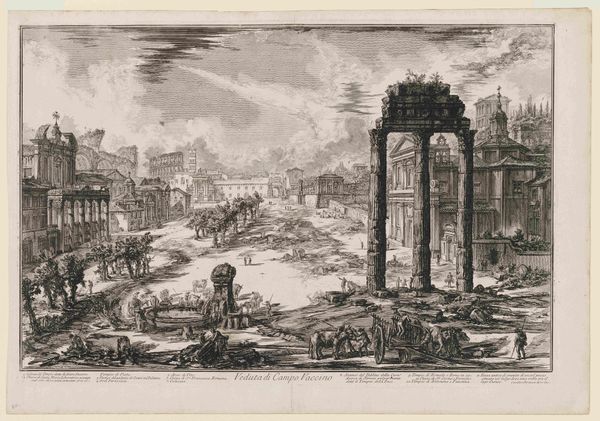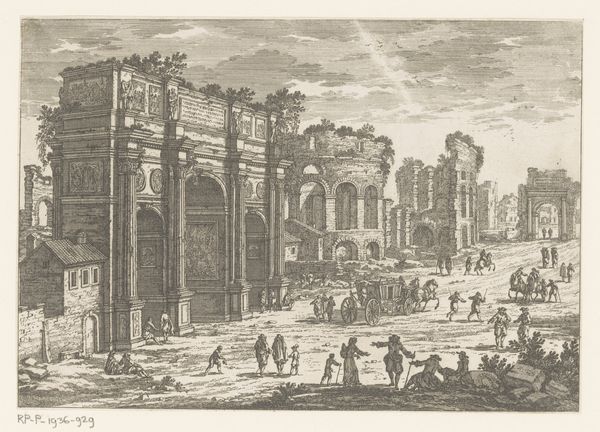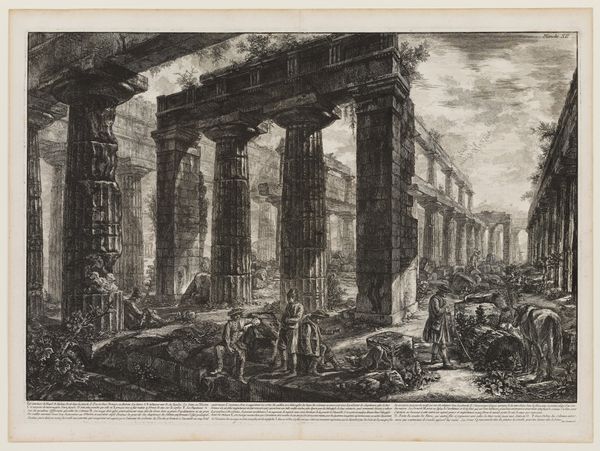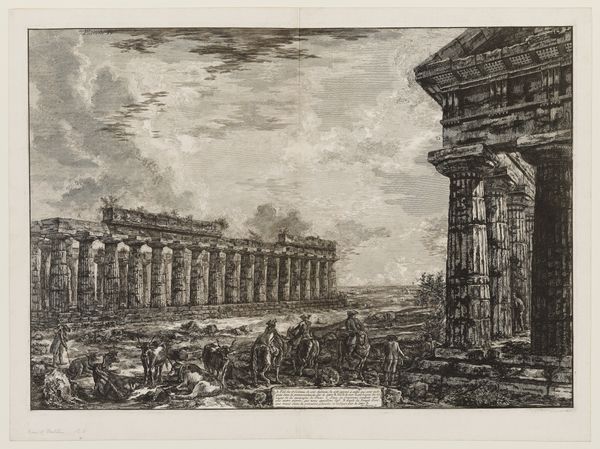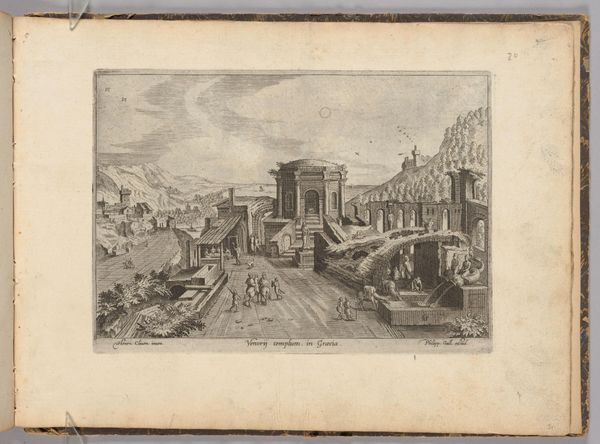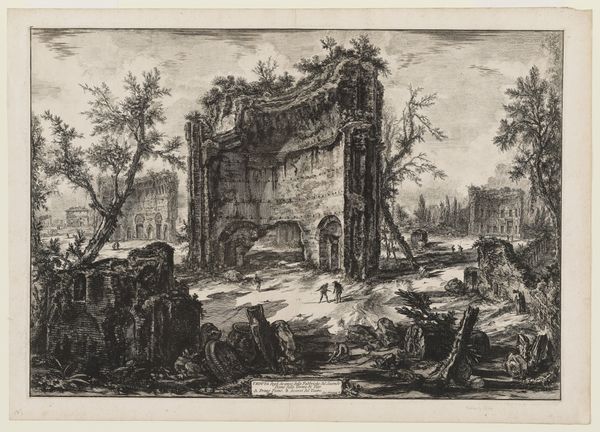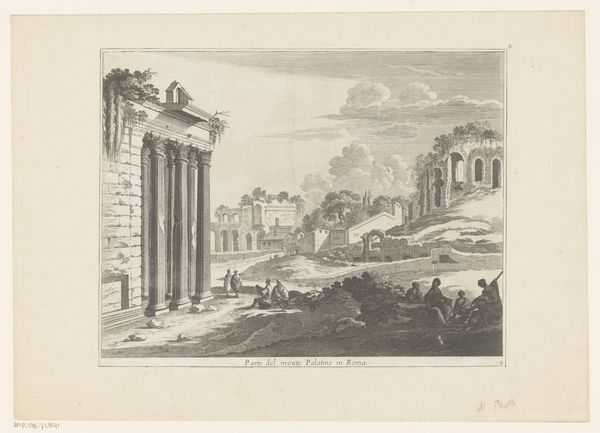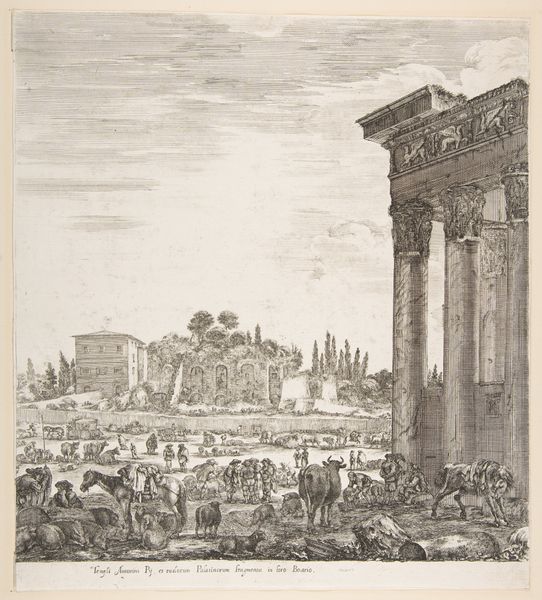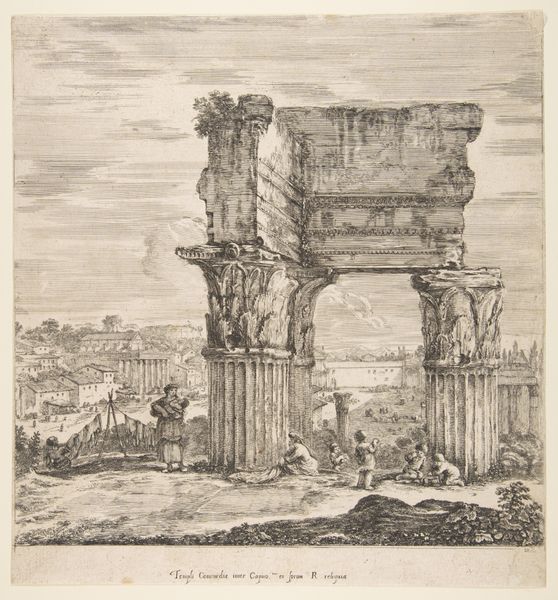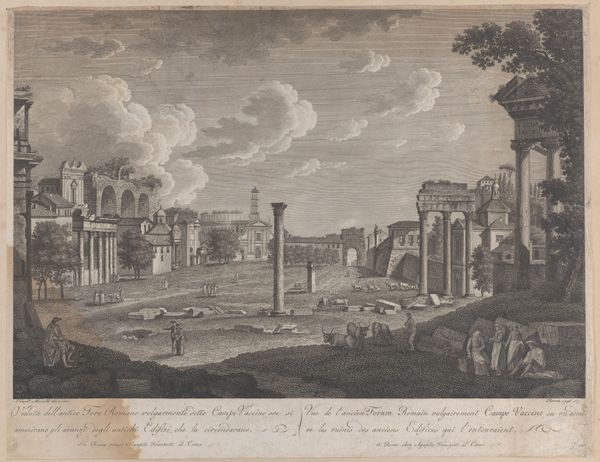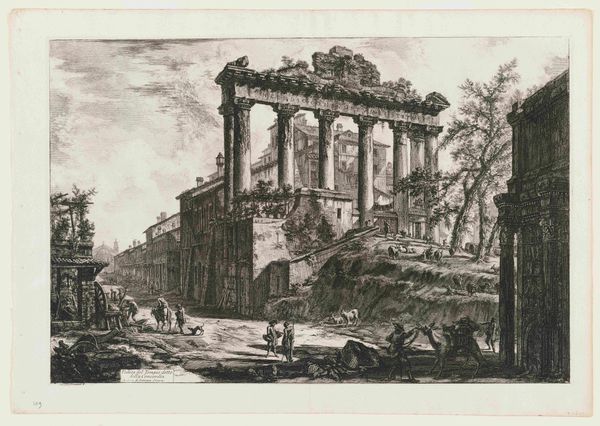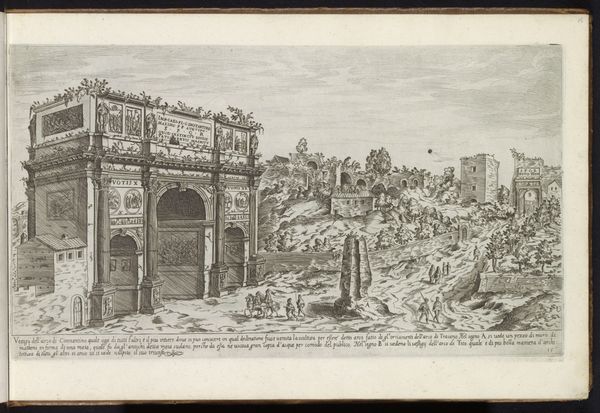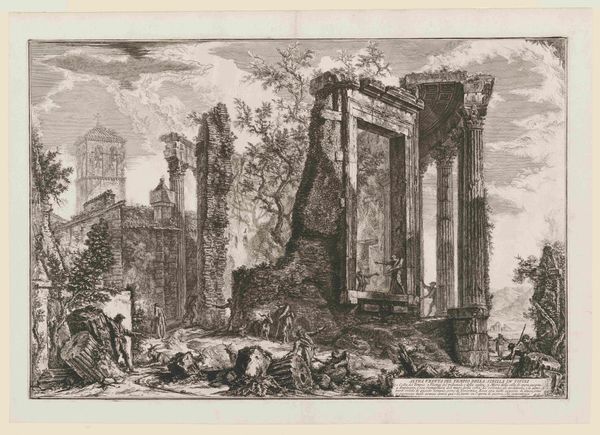
Forum Romanum- Veduta di Campo Vaccino c. 18th century
0:00
0:00
drawing, print, etching, ink, drypoint
#
drawing
#
neoclacissism
# print
#
etching
#
landscape
#
etching
#
romanesque
#
ink
#
history-painting
#
drypoint
Dimensions: 17 15/16 x 27 13/16 in. (45.56 x 70.64 cm) (plate)20 13/16 x 30 1/8 in. (52.86 x 76.52 cm) (sheet)
Copyright: Public Domain
Editor: This etching, "Forum Romanum - Veduta di Campo Vaccino" by Giovanni Battista Piranesi, dates back to the 18th century. It captures a scene of ancient Roman ruins. The mood feels both grand and melancholic, I think, this contrast between the glory of the past and its state of decay. What stands out to you about this piece? Curator: Well, firstly, “veduta” means “vista” or “view” and was a popular genre at the time, serving as almost a postcard of the Grand Tour. But Piranesi does something more. He's not simply documenting; he’s shaping perception. The Forum, once the heart of Roman power, is now 'Campo Vaccino,' literally "cow field". He juxtaposes crumbling grandeur with everyday life, peasants and livestock mingling among the ruins. Editor: So it’s about the shift in power and usage? The title sounds almost derogatory towards what the place has become, compared to what it once was? Curator: Exactly. Consider the market for these prints: wealthy Europeans on the Grand Tour. They’re buying into a romantic vision of antiquity, but Piranesi isn’t giving them a purely celebratory image. He is showing them, and reminding us of, the passage of time, and the impermanence of power and empires, all being consumed by later society. What impact do you think his style of representing architecture had? Editor: His use of light and shadow does give the architecture drama, despite being decrepit. I imagine this style impacted future architecture students as a blueprint to emulate Rome's glory, no? I now appreciate how Piranesi goes beyond documenting by creating his own social and political narrative. Curator: Precisely. The print participates in constructing how Rome, antiquity, and their ruins were interpreted in his era. That's the fascinating power of art.
Comments
No comments
Be the first to comment and join the conversation on the ultimate creative platform.
